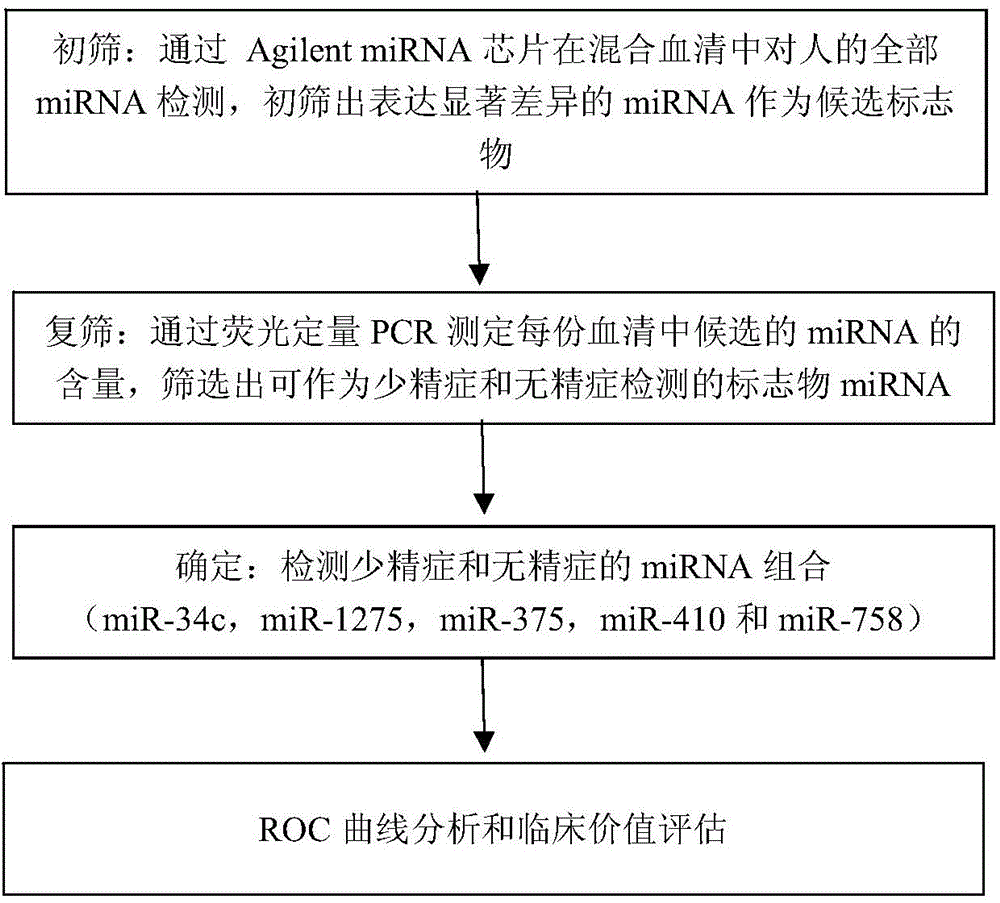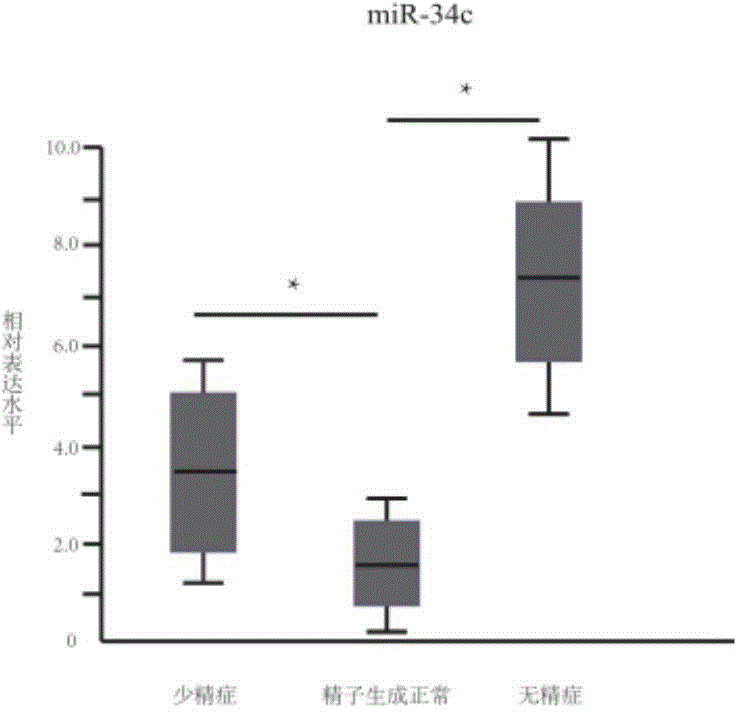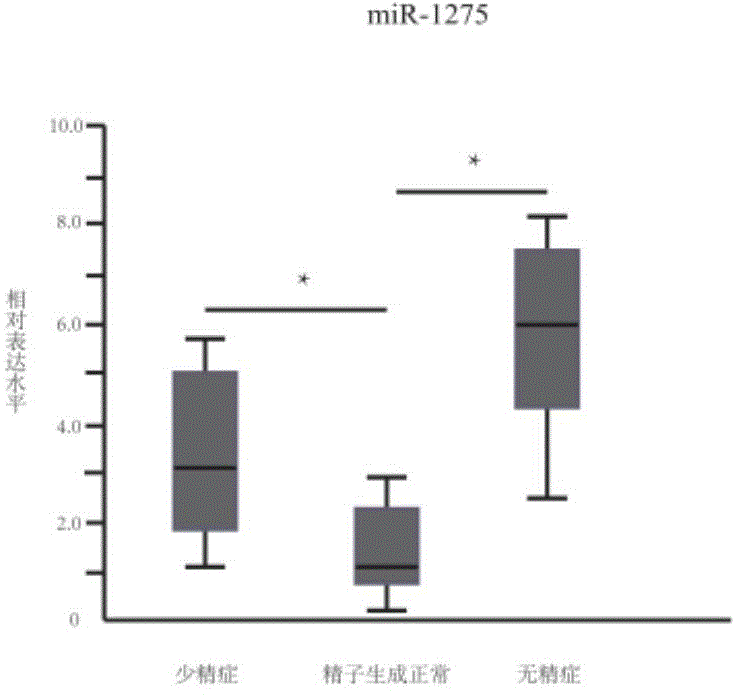Application of serum miRNA biomarker
A biomarker and serum technology, applied in the field of biomarkers, can solve the problem that a single gene cannot fully explain the pathogenic mechanism, and achieve the effects of convenient source, accurate quantification, and convenient use
- Summary
- Abstract
- Description
- Claims
- Application Information
AI Technical Summary
Problems solved by technology
Method used
Image
Examples
Embodiment 1
[0044] Embodiment 1, collection of clinical samples and arrangement of clinical data
[0045] According to the standards of the World Health Organization (“Laboratory Test Manual for Human Semen and Sperm-Cervical Mucus Interaction [M]” (4th Edition), edited by the World Health Organization, translated by Gu Qun, etc., Beijing: People’s Medical Publishing House, 2001.5.1 ) determined as azoospermia or severe oligospermia. The semen examination should be analyzed at least twice (including centrifuge thick section analysis). All the subjects were married for 2 to 13 years, the woman's examination was normal, they lived together for more than 2 years after marriage, and no contraceptive measures were taken. After strict screening, the infertility caused by various infection sequelae, vas deferens obstruction and hypothalamus-pituitary disease were excluded. No endocrine therapy was performed. Cytogenetic analysis showed a normal karyotype.
Embodiment 2
[0046] Example 2. Preliminary screening of serum-specific miRNA expression chip for oligospermia and azoospermia
[0047] (1) Screening of chip samples
[0048]From the collected clinical serum samples, 9 cases of azoospermia were selected, aged 23 to 29 years, with an average age of 26±3 years, and no sperm was found in more than two routine semen examinations. There were 9 cases in the oligospermia group. The age of oligospermia patients was 22 to 30 years old, with an average age of 26±4 years old. 6 / mL. The control group consisted of 9 healthy male volunteers with a reproductive history, aged 24-29 years, with an average age of 26±3 years, and routinely normal semen.
[0049] (2) Collection of serum samples
[0050] Collect 2ml of peripheral blood from three groups of subjects, quickly transfer it to a blood collection tube, let it stand at room temperature for 15-30 minutes, centrifuge at 1900×g at 4°C for 10 minutes, carefully draw the supernatant into a centrifuge t...
Embodiment 3
[0054] Example 3, Real-time fluorescence quantitative PCR method verification of oligospermia and azoospermia serum-specific miRNA
[0055] (1) Screening of verification samples
[0056] From the collected clinical serum samples, 20 cases of azoospermia were selected, aged 23 to 35 years, with an average age of 29±6 years. No sperm was found in more than two routine semen examinations. In the oligospermia group, there were 20 cases. The age of oligospermia patients was 22 to 34 years old, with an average age of 28±6 years old. 6 / mL. The control group consisted of 20 healthy male volunteers with a reproductive history, aged 24-36 years, with an average age of 30±6 years, and routinely normal semen.
[0057] (2) Collection of serum samples
[0058] Collect 2ml of peripheral blood from three groups of subjects, quickly transfer it to a blood collection tube, let it stand at room temperature for 15-30 minutes, centrifuge at 1900×g at 4°C for 10 minutes, carefully draw the supe...
PUM
 Login to View More
Login to View More Abstract
Description
Claims
Application Information
 Login to View More
Login to View More - R&D
- Intellectual Property
- Life Sciences
- Materials
- Tech Scout
- Unparalleled Data Quality
- Higher Quality Content
- 60% Fewer Hallucinations
Browse by: Latest US Patents, China's latest patents, Technical Efficacy Thesaurus, Application Domain, Technology Topic, Popular Technical Reports.
© 2025 PatSnap. All rights reserved.Legal|Privacy policy|Modern Slavery Act Transparency Statement|Sitemap|About US| Contact US: help@patsnap.com



